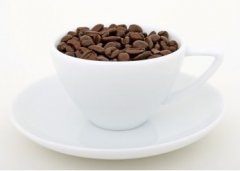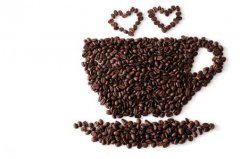What is the basic knowledge of Crema espresso what is the coffee oil?

Many people have translated this classic English original, but most of the translators do not understand or do not understand the principle of Italian coffee, so the translation is not accurate or difficult to understand correctly. This article is translated by a real expert who understands Italian coffee, especially the understanding of the original text and the combination of Chinese is very good. The article is good because it expounds the essence and spirit of Crema from the perspective of the inherent composition of coffee, the law of chemical changes after heating and how to better produce pleasant Crema.
What is Crema? (Krima)

In the process of roasting coffee beans, coffee beans will produce a lot of carbon dioxide, most of them will be emitted during the cooling process, a few will continue to be stored in the bean body, grinding coffee powder will release these gases, so it is necessary to make coffee as soon as possible after grinding.
When hot water hits the coffee powder under high pressure, it will emulsify the insoluble oils in the coffee powder, and at the same time it will saturate and dissolve a large amount of carbon dioxide, which is much larger than the solubility of hot water under normal pressure. This is why countless fine bubbles appear immediately when the liquid flows out from the handle. But that doesn't explain Crema, you open a can of Coke, and we see countless bubbles coming up, but they don't last.

To create a stable foam, we need some bubbles and some compounds to "wrap" the bubbles so that the bubble structure remains stable and elastic. The process of this chemical reaction can be thought of as the action of a surfactant. Unlike milk foam, which is done through protein eggs, coffee is done through a substance called "protein melanin." It is produced by a combination of chemical reactions during baking, a process that scientists do not know much about. Protein and melanin are not hydrophilic substances, so when hot water hits, they naturally distribute on the surface of the bubble, thus being able to contact more air, thus creating countless tiny bubbles, so we have-foam. There is something else-grease, and the presence of grease is undesirable because grease often destroys the foam structure and results in failure. Think about how when we make a cake, we have to remove the egg yolk, otherwise the fat in the egg yolk will cause the egg white to be whipped.

So, will the oil in coffee cause crema to disappear quickly within minutes? The answer is both right and wrong. Surfactants dissolve in water, and gravity pulls them off the surface of the foam along with the water, making the foam fragile, elastic, and quickly disappearing. The rate at which foam disappears is related to the rate at which water is pulled away, but a properly brewed cup of coffee lasts longer than a cup of fast-brewed coffee because it is more liquid than a fast-brewed coffee, as evidenced by our taste.
Under-extracted espresso Crema colors

Extracted over espresso Crema colors

Crema should be a light brownish red color, but yellow-white or very black, almost burnt brown. What does it mean? The answer comes from the drink, because crema is actually bubbles of carbon dioxide wrapped around brewed coffee, so darker foam means stronger coffee is a natural assumption. But it's actually very difficult to tell the color of coffee apart unless you dilute two cups of coffee or look at it under a microscope.
Another factor also plays an important role: the reflection of light from the foam means that the coffee looks lighter through the foam than it actually is. And the smaller the foam, the greater the effect, so even if the espresso itself is very dark, it may look very light (which explains why dark beer has very white foam at the top).

The 15-second espresso usually has a whiter crema because it is lighter. Coffee powder is water quenched for a shorter time, and the viscosity of coffee is lower than that of 25 seconds. For the same reason, coffee brewed at a lower water temperature will also be weaker, because it does not have enough energy to dissolve the substances in the coffee (it should be that the solubility of the lower water temperature is low, not the so-called energy). This also explains why over-quenching can lead to dark, charred crema.
Article source: Mystery Su Cafe
Important Notice :
前街咖啡 FrontStreet Coffee has moved to new addredd:
FrontStreet Coffee Address: 315,Donghua East Road,GuangZhou
Tel:020 38364473
- Prev

See how a good cafe ignites the coffee enthusiasm of a barista
According to statistical analysis, the average life cycle of small and medium-sized enterprises in China is only 2.6 years, which is very common in the catering industry where economic activities are very frequent. You can often see restaurants changing signs on the streets. You just spent here last month, and now people have gone to empty houses. It is said that the catering industry is an industry with a very low investment threshold. How can it be so vulnerable? were several factors
- Next

Coffee control people look, how many calories do you know about all kinds of coffee?
Do you like coffee? Get used to drinking coffee every day. I'll have a cup for breakfast, a cup after dinner, and a refreshing cup at night. Will you make it? A large cup of mocha coffee has the same calories as a bowl and a half of white rice! Don't be stunned yet! In fact, coffee itself contains almost no calories, but fancy coffee adds sugar, milk and chocolate to double the calories! Eating too many calories can lead to obesity,
Related
- What is the meaning of lactic acid fermentation with coffee bean treatment?
- How to judge the state of foam by sound?
- How does the latte pull out the unicorn pattern? Come to get for a little trick to improve the flower pull!
- Will flower pulling affect the taste of the latte?
- Do you know the history of coffee?
- The difference between honey treatment and sun washing what is raisin honey treatment?
- What kind of milk can a novice use to make coffee foam to keep the foam longer? The correct method and skills of milking tutorial sharing
- Why do washed coffee beans taste sour? Flavor characteristics of washed Coffee
- Introduction to the skill of how to practice the size and height of water injection around the circle of hand-brewed coffee
- How do beginners practice coffee flower drawing from scratch?

